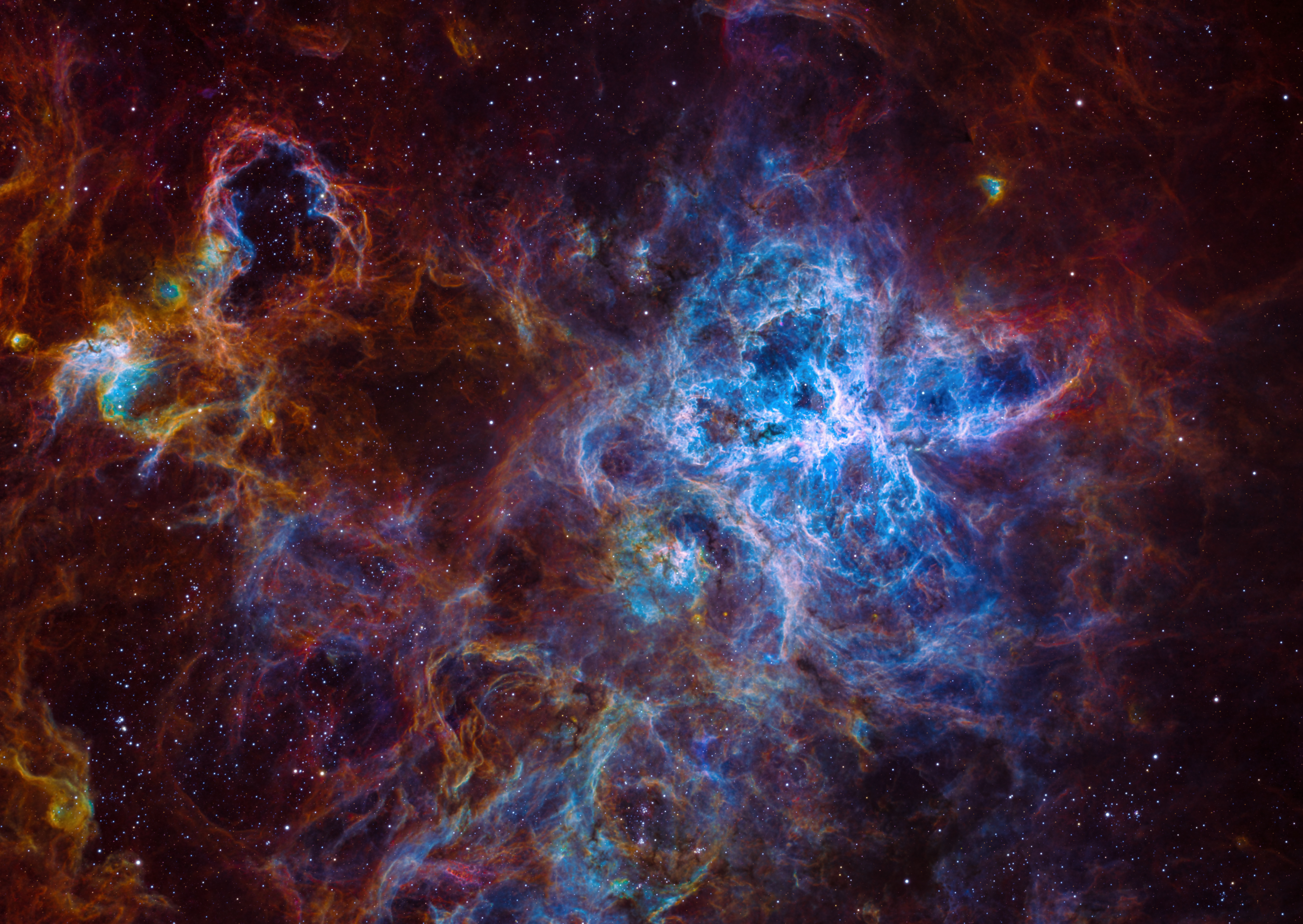
 |
The Tarantula Nebula |
|||||||||||||||||||||
About This PhotographIn the Large Magellanic Cloud, a small satellite galaxy orbiting our own Milky Way, lies the beautiful and chaotic Tarantula Nebula. It is a very active star-forming region, with the copious ultraviolet light from bright, hot newborn stars providing the power that makes the remaining gas and dust glow in brilliant colors. The nebula is so bright that if it were the same distance to us as the Orion Nebula in our own galaxy, it would cast visible shadows at night. It is over 100 times further away, though, at a distance of about 160,000 light years. The colors in this photograph indicate the specific chemical element that is glowing: red is sulfur, green is hydrogen, and blue is oxygen. This color mapping generally traces the energy level within the nebula. Sulfur is most easily made to glow, taking less energy than hydrogen. Oxygen requires much more energy to glow brightly, so we find the blue regions closer to the stars and star clusters powering the nebula. | |||||||||||||||||||||
|
|||||||||||||||||||||